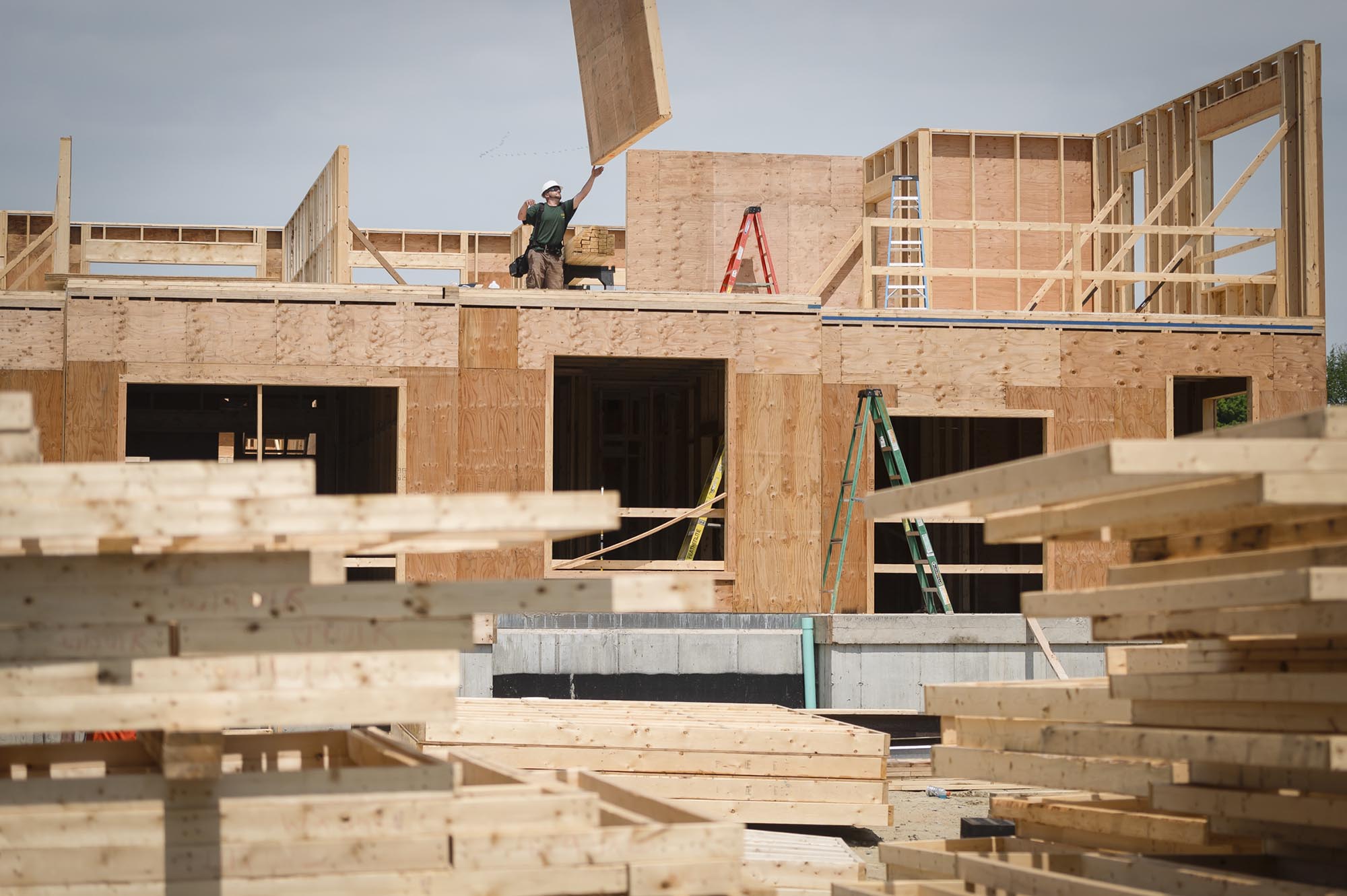Vermont would need to build between 24,000 and 36,000 new housing units to meet estimated demand over the next five years, according to the latest Vermont Housing Needs Assessment.
The new report, put together by the Vermont Housing Financing Agency for the Department of Housing and Community Development, shows that a combination of factors — including Covid-19 pandemic migration, aging housing stock and changing housing needs — have driven up demand.
At the same time, the supply of housing in Vermont remains tight. Only 2,300 new homes were permitted in 2022, far below the 5,000 to 7,000 per year that the report estimates will be necessary to meet demand.
Combined, the increased demand and limited supply have driven home costs sky high, lowered Vermont’s vacancy rate, blocked renters from buying homes, left homeowners stuck in poor-quality housing and played a role in rising homelessness.
The pandemic changed the trajectory of Vermont’s housing market, according to department Commissioner Alex Farrell. Vermont’s population has grown since then due solely to migration, according to census data cited in the report.
“People are moving here,” he said. “We were begging them to for years and years, and then during the pandemic, they started moving here. … but we’re not ready for people to be here and to come. We don’t have homes for them, and it’s squeezing out the most vulnerable people.”
Between 2019 and 2023, the average purchase price for buyers of single-family homes rose by 38%, and the cost to buy manufactured homes rose 37%, the report said.
Renters are also struggling to afford housing: About half of Vermont renters spent more than 30% of their income on housing — the report’s “affordability threshold” — between 2018 and 2022. Also, one quarter of Vermont renters spent more than 50% of their income on housing.
Vermont also struggles with low-quality and aging housing stock. About 20,000 homes had housing quality concerns in 2022, the report said. The state’s 32,000 low-income homeowners, many of them 65 and older, are particularly at risk of not being able to afford home repairs or adapt their homes to meet their needs as they age.
“They are still in their five-bedroom home that they needed when they were raising a family,” Farrell said. “Now they’re 75 or 80 (years old). They don’t need that much space anymore, but it doesn’t make any sense for them to move.”
The report said there is a shortage of “service-enriched housing” for older Vermonters, along with Vermonters at risk of homelessness or recovering from substance use disorders.
Vermonters of color are also disproportionately affected by the housing crisis, according to the report. Black, Asian and Hispanic Vermonters were all less likely than white Vermonters to own their own homes.
Fixing Vermont’s housing crisis has been a priority for legislators and Gov. Phil Scott’s administration for years. In fact, the state spent $500 million of federal pandemic aid on housing initiatives, Farrell said.
READ MORE
Some of the results of that funding should become clearer in the next year as more housing projects come online. But Farrell said that all that state spending is only half the story. Private investment, in his view, has to make up the rest of the gap.
“You need to create a regulatory environment in which private capital goes there and invests in those units, because the private market is just going to have way more resources and ability to do that than taking public resources,” he said.
In recent years, the Legislature has passed bills to loosen local zoning restrictions and reform the state’s land use law, Act 250, for new housing. However, other hurdles for private development, like the rising cost of construction, is “largely out of our hands in Vermont,” Farrell said.
Even if new housing is built, could it simply go to second homeowners or new residents? Farrell said it’s a possibility.
About 15% of Vermont’s housing units are seasonal homes, although the rate rises dramatically in ski towns and other tourist-drawing communities. Recent years have also seen a rise in short-term rental listings, according to the report.
But Farrell pointed out that many housing projects have requirements for developers to set aside some of their units for low-income Vermonters or people exiting homelessness.
Even with unregulated projects, the additional supply tends to bring the overall cost down, he said. “We cannot guarantee it’s going to go to the teacher or the firefighter, but we do know that we need units, so as many as we can support as possible is helpful.”
Burlington and other Vermont communities have taken an even stronger stance with short-term rentals, taxing them or putting a limit on how many can operate. Farrell said his department’s position is that those regulations should be up to local communities, rather than taking a statewide approach.
Farrell said he was encouraged by the increased interest in this year’s report. Housing assessment reports are a requirement of the U.S. Department of Housing and Urban Development every five years.
“It used to be that this document every five years was just sort of a wonkish document that we would look at in the housing space,” he said. Now, legislators are actively paying attention to the work and even asking for the authors to look into additional topics.
For Farrell, this report is a good reminder that the bills passed in the most recent legislative session are not enough.
“We still have a lot of work to do,” he said. “We should continue to be creative because we can put a huge dent in this problem, but we cannot back away.”
Read the story on VTDigger here: State agency report: Vermont needs at least 24,000 new homes .

